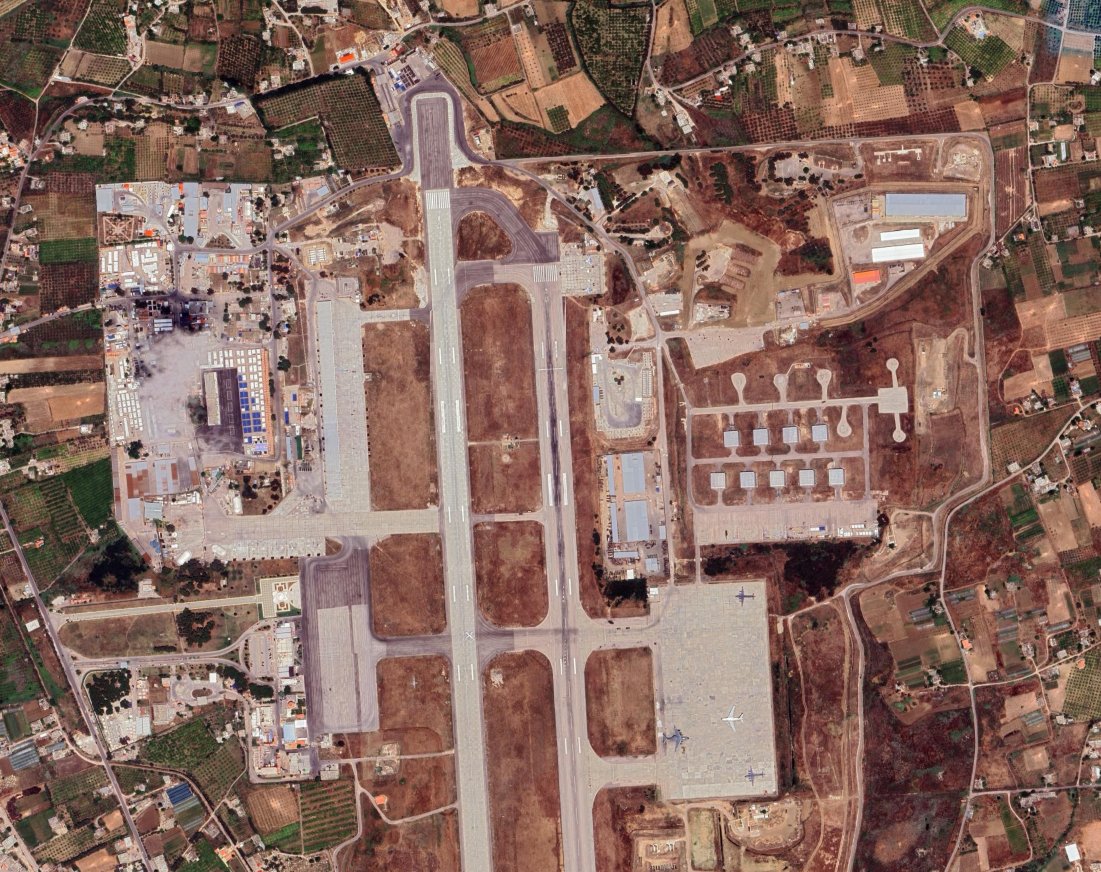
According to a video shot on 12 December by a local TV drone flying near the Hmeimim/Jableh base, Russia still has at least 15 combat aircraft at the Syrian base. Specifically, the video shows 4 Su-34 FULLBACK theatre bombers, 7 Su-24M2 FENCER tactical bombers and 4 Su-30/Su-35S FLANKER fighters, all clearly visible under as many shelters.
The video also shows 6 medium-heavy transport aircraft including 2 An-26/An-30, 2 Il-76MD (plus another belonging to the Syrian Air Force) and an An-72. In some sequences, 2/3 Mi-8/Mi-17 helicopters are also glimpsed. However, such footage does not show any other aircraft present at Jableh.
To the aircraft shown must be added 2/4 Su-25s not visible in the video, but certainly used in the first days of the uprising, and an equal number of Su-27/30s intended for QRA activities and, for this reason, parked in special areas not filmed by the drone.
In addition, a considerable rotary-wing combat component of about 20 helicopters is still present at the Istamo base, located 7 km north of Hmeimim. The latter, already home to 4/6 Ka-52 ALLIGATOR helicopters, in the last week has seen the arrival of 10/12 helicopters from advanced Russian bases located in the governorates of Damascus and Homs.
In short, a force largely identical to the one the Russians have had in Syria for the past 8 years. This was the situation as of 13/12/2024. In the last 2/3 days, however, the withdrawal of some Russian systems, vehicles and personnel from Syrian bases has begun (some Russian troops have only returned in the last 2 days from advanced bases in other areas of central, eastern and southern Syria).
At least 2 An-124s and 3 Il-76s regularly land in Hmeimim, while a huge column of vehicles was seen moving northwards, along the highway from Homs to Tartus, and from there moving towards the border with Turkey. Among the systems certainly evacuated by the An-124 were those belonging to the 2 SAM S-300 and S-400 previously placed to protect Jableh and Tartus.
In addition, US sources spotted the withdrawal in early December of several MiG-31 interceptors. To date, no further movements of aircraft are reported, which is not an accurate indication of their fate. At the moment, although Moscow has announced the start of negotiations with the new Syrian ‘government’ aimed at maintaining its bases in Syria - it should be recalled that they were ceded in 2017 by Assad under a 49-year lease agreement - the short-term fate of the aforementioned airborne components is unclear. Albeit these aicraft have flown plenty of flight hours and rarely subject to rotation, their operability would make them particularly useful for allowing a rotation with the aircraft involved in the operations in Ukraine.
The decision to keep them at Hmeimem could be purely dictated by a precise logistical choice, which envisages their evacuation at a later/final stage, or it could be dictated by the hope of a possible agreement being reached in a short timeframe that would avoid a ‘coming and going’ of aircraft, flight and ground personnel and all the logistics involved.
As of today, considering the aforementioned removal of the anti-aircraft systems - but not the coastal and EW ones, at least for the time being - as well as the removal of the entire Mediterranean Flotilla from the base of Tartus (despite the fact that, as of 13/12, it was still off the Syrian coast and not sailing westwards), it is likely that Moscow is preparing to evacuate the entire air force from Jableh.
Even though it has not been attacked by the rebels in the past 2 weeks (which also applies to the Russian contingents as they move towards the coast), the removal of its most valuable anti-aircraft systems, including SHORAD, would make it vulnerable to any changes in the mood of the neo-government militia galaxy.
On the other hand, perhaps as partial confirmation of a withdrawal - at least temporary - from Hmeimem, an increase in flights of Russian Il-76s to the Libyan bases of Jufra and Khadim, and the appearance of some previously absent systems in the former (radar and anti-aircraft systems), has been reported for about a week.
The loss of Hmeimim and Tartus would be a very hard blow for Russia, both from the financial point of view, considering that Moscow has invested considerable resources in expanding and adapting the two bases over the past 7/8 years, and, above all, from the strategic point of view, considering their role as fundamental ‘nodes’/hubs for projecting air and naval power in the Mediterranean (along NATO's southern flank), in Africa, and in the Middle East.
This explains the clear ‘softening’ in Moscow's recent statements towards Hayat Tahrir al-Sham (the leading group of Qaedist militias responsible for the overthrow of Assad) which is recognised as a terrorist organisation in Russia, just as in Washington and London.








.png)
